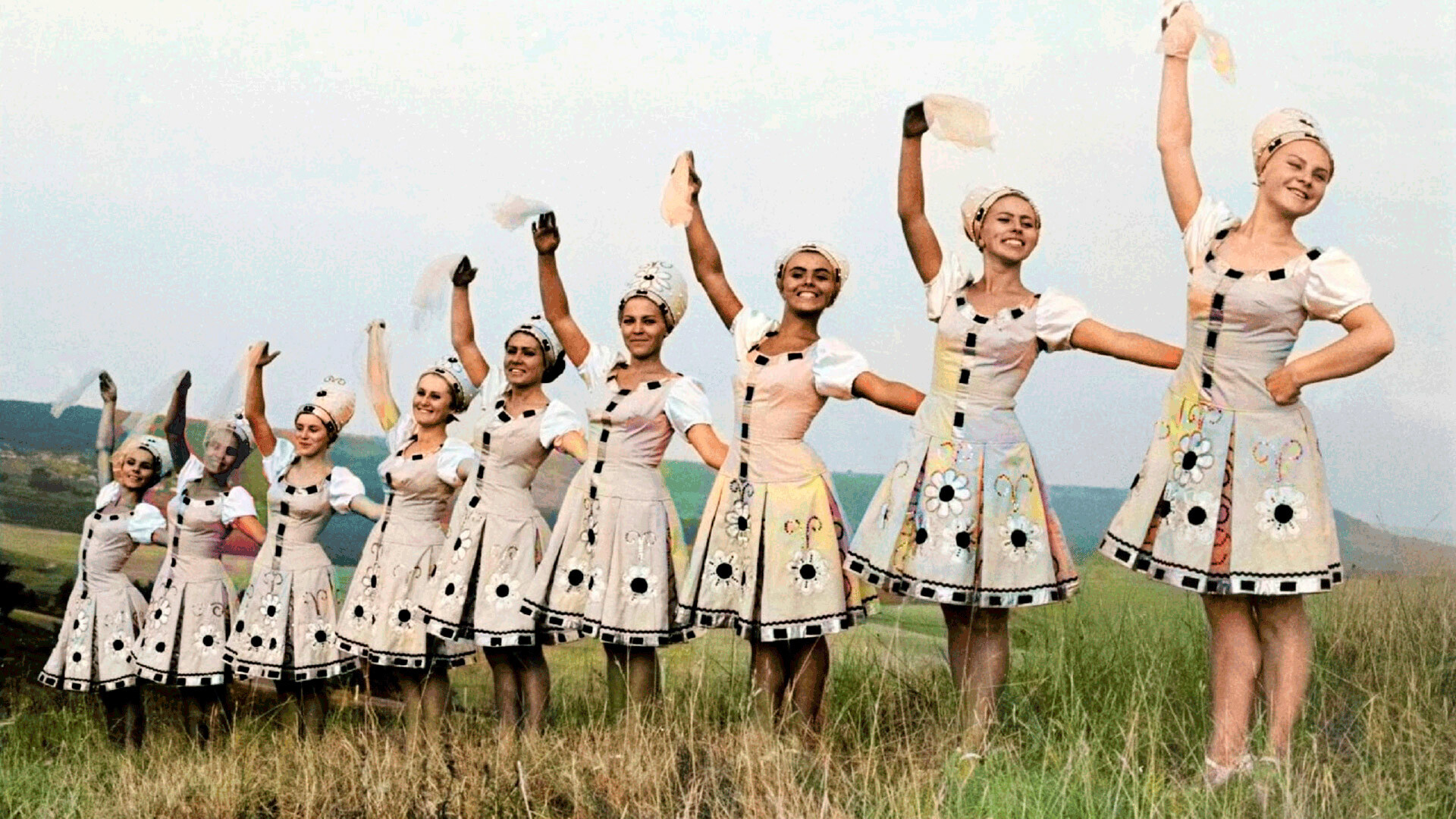
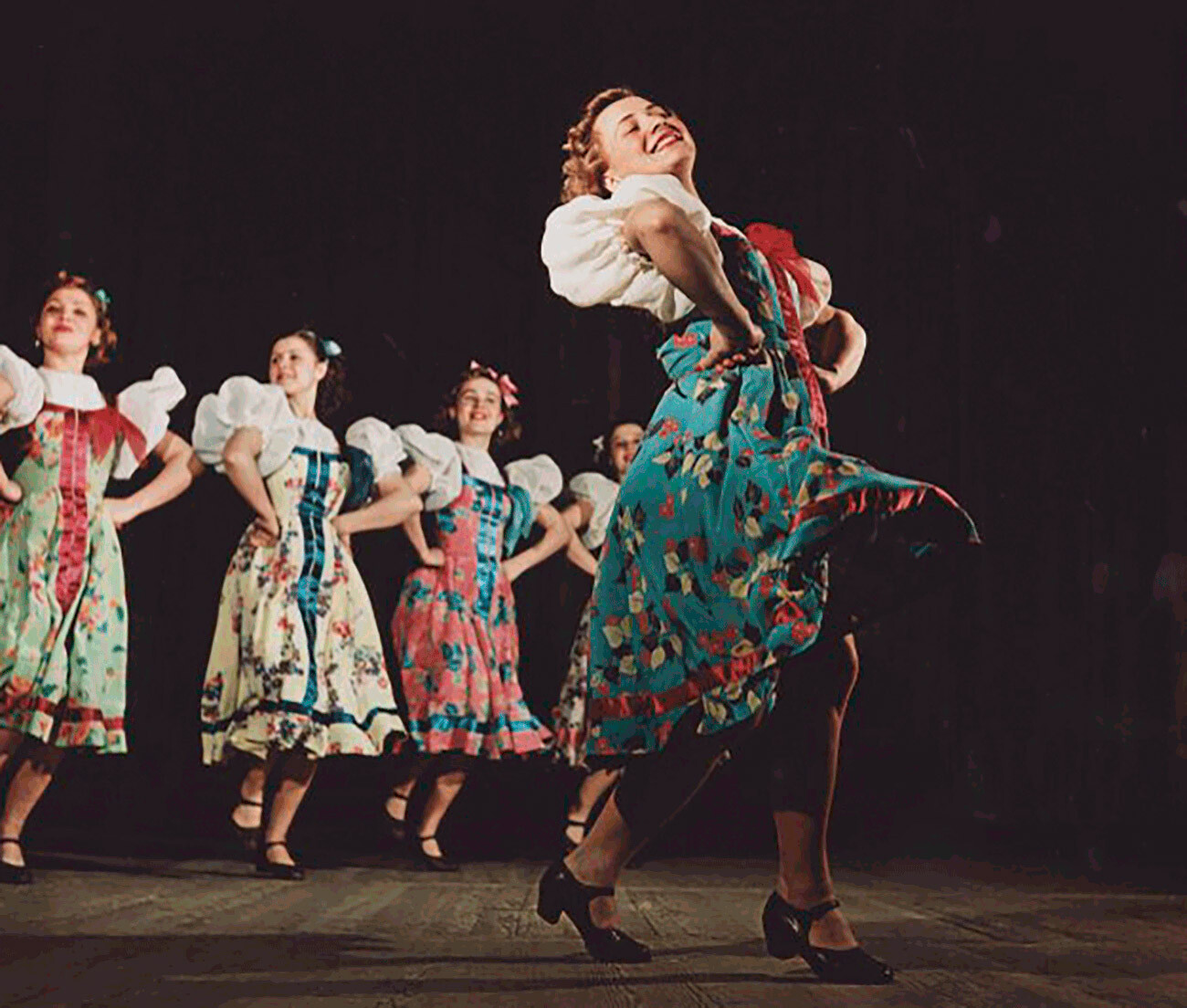
Folk Dance Ensemble of the USSR
Yevgeny Umnov/MAMM/MDF/russiainphoto.ruPatriotic Russian “folk” dance began to develop on the big stage after the 1812 war with Napoleonic France. And, up to the late 19th century, there was a trend of turning back to Russian roots and all things Russian became incredibly popular (including traditional architecture, costumes and handicrafts).

Folk dance in the 1930s
MAMM/MDF/russiainphoto.ruIn the 1910s, the Bolshoi theater staged ‘The dances of the nations’ and the performance was sold out for a long time.
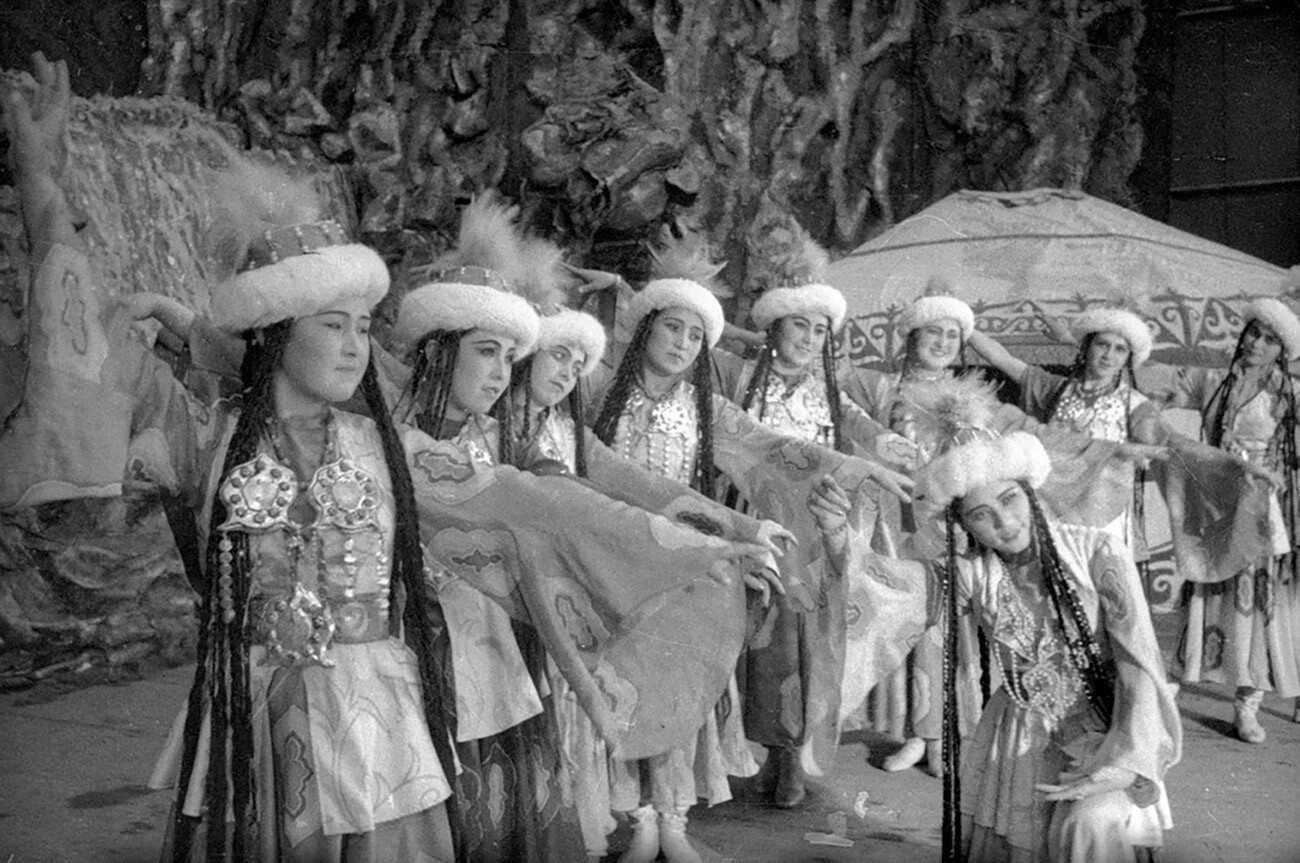
Kirgiz folk dance company
Yevgeny Khaldei/MAMM/MDF/russiainphoto.ruSoviet authorities supported folk dances as one of the methods of uniting nations of the multi-ethnic country, showing its diversity.

Mass dance in the Urals, 1950s
Yevgeny Khaldei/MAMM/MDF/russiainphoto.ruAnd the Soviet era gave birth to a brand new phenomenon, the ‘Folk Stage Dance’, which was a symbiosis of professional choreography and folk dance.

Folk dance concert in Sevastopol, 1955
Valentin Khukhlayev/russiainphoto.ruIn the Soviet Union, there were about 20 professional ensembles of folk dance and hundreds of amateur collectives, which many schools, universities and houses of culture arranged on the wave of the mass popularity of amateur art performance.
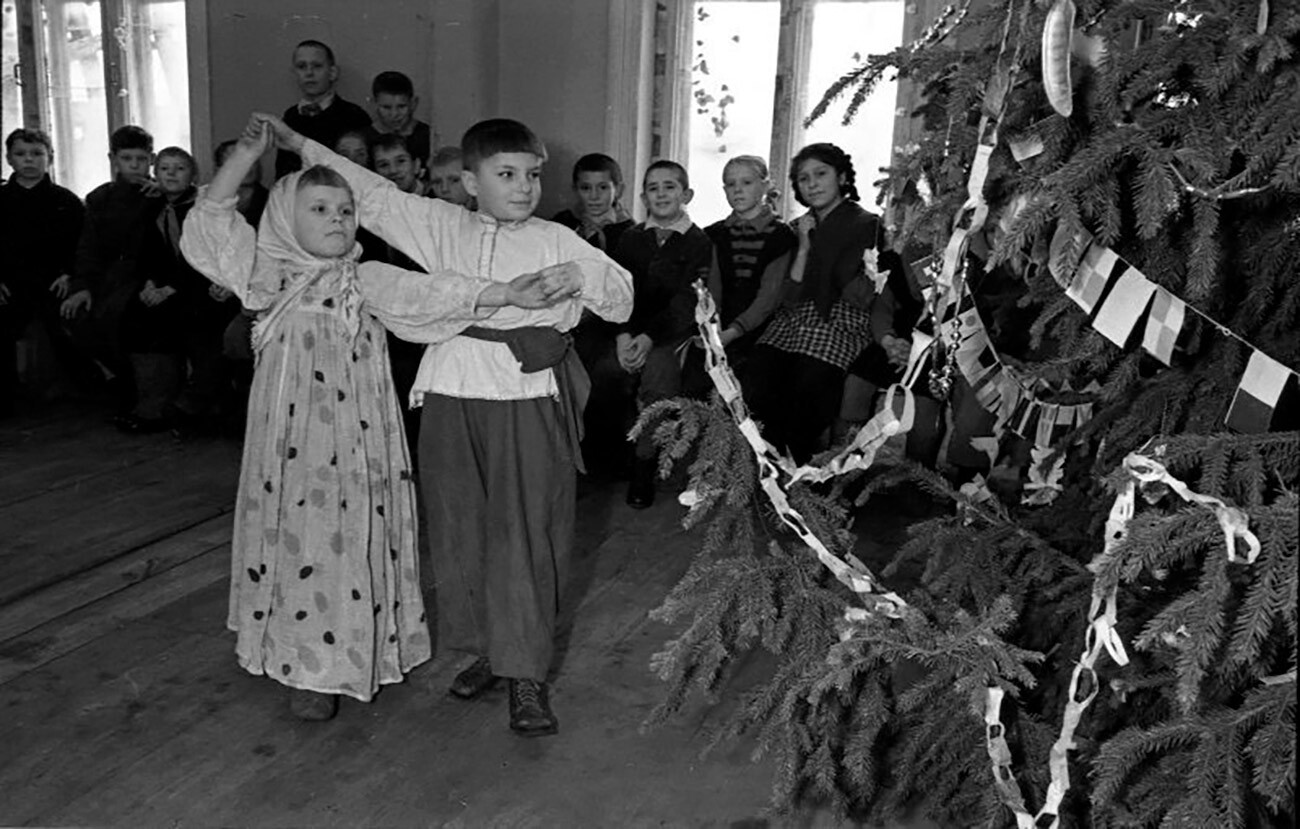
Kids dancing during New Year celebrations in kindergarten, 1940s
Sergei Vasin/MAMM/MDF/russiainphoto.ruIn the 1930s, an ‘All-Union festival of folk dances’ was created, represented by almost all the nationalities of the USSR.
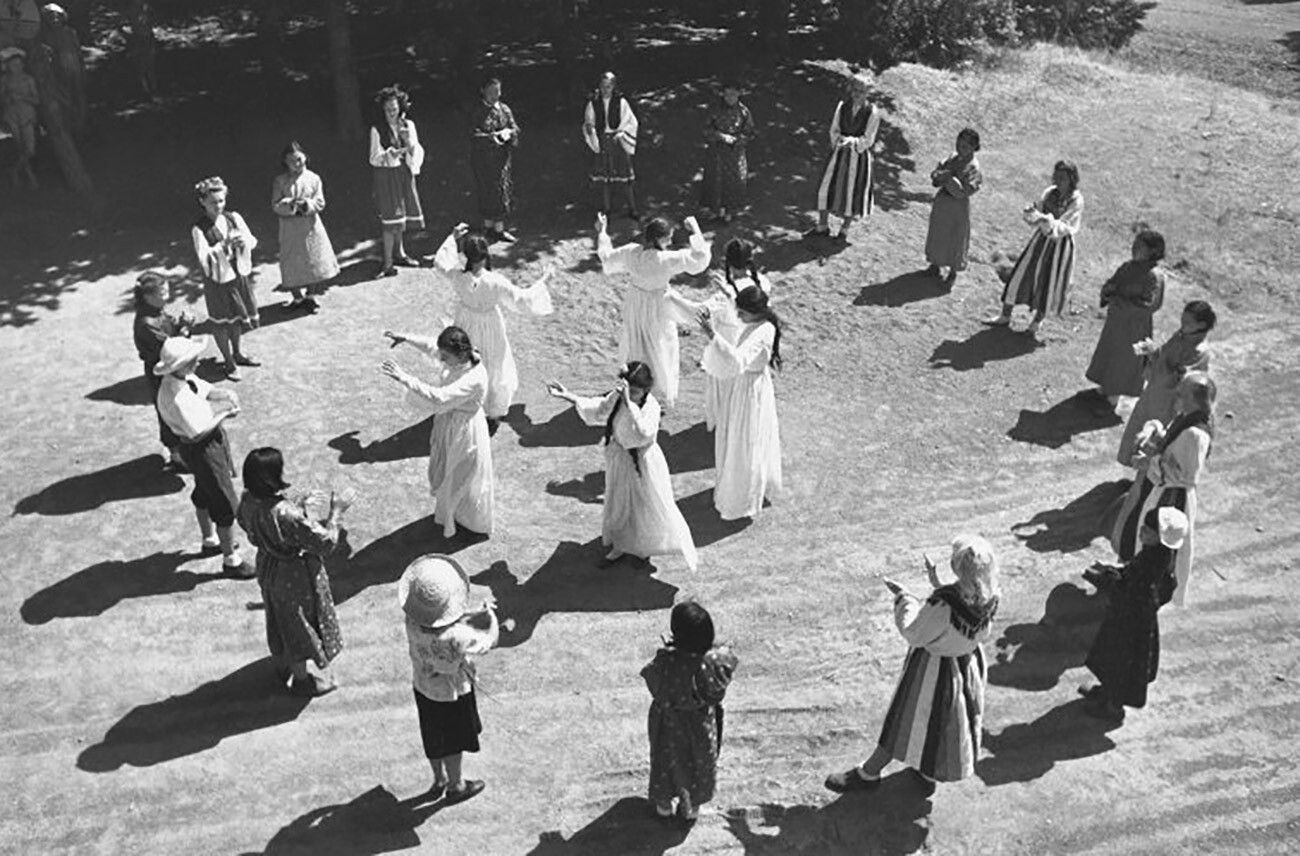
Folk dance in Artek pioneer camp, 1945
Yevgeny Umnov/MAMM/MDF/russiainphoto.ruNot a single major holiday was without a folk dance group performance.
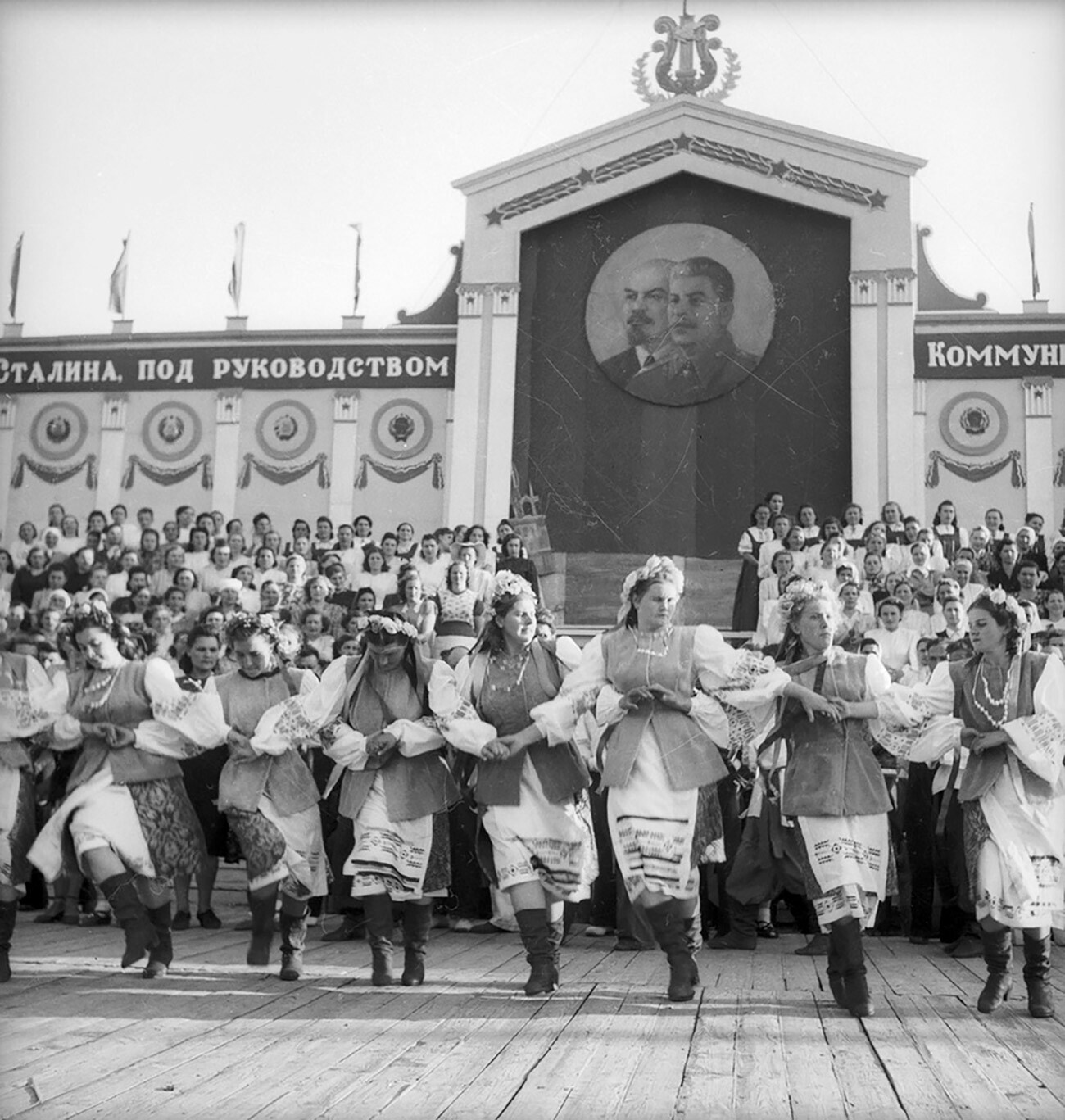
Harvest holiday in Krasnodar, 1953
Yevgeny Khaldei/MAMM/MDF/russiainphoto.ruKeeping in mind a great positive effect on the cultural and national policy that folk dance development had, the Soviet authorities initiated the foundation of the State Academic Folk Dance Ensemble, which was headed by the Bolshoi’s choreographer Igor Moiseyev.
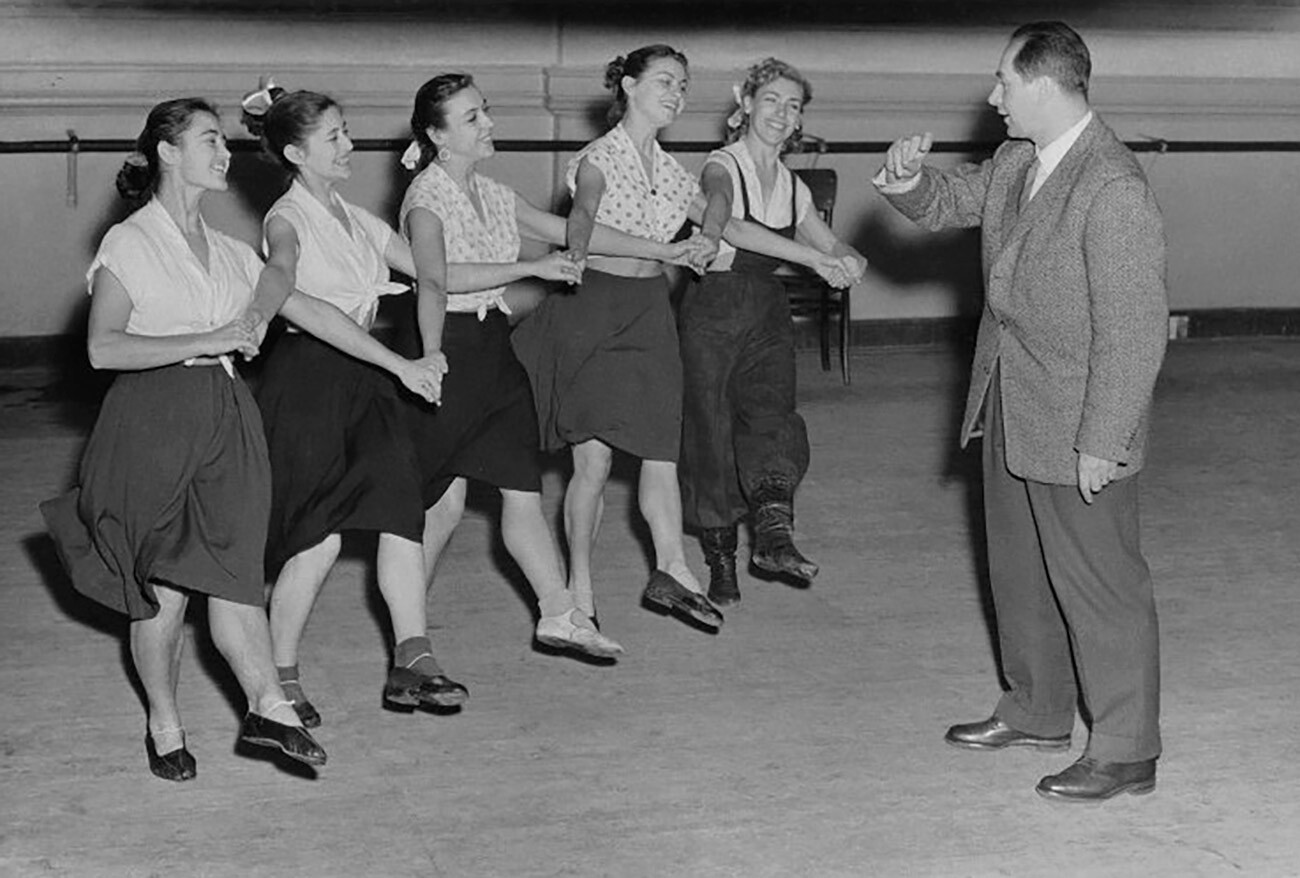
Igor Moiseyev instructing at rehearsals, 1956
Yevgeny Umnov/MAMM/MDF/russiainphoto.ruThe ‘Igor Moiseyev Ballet’ (‘The Igor Moiseyev State Ensemble of Folk Dance’) still tours around the world. It is also very famous in Russia as well and frequently performs on the stage of the Bolshoi.
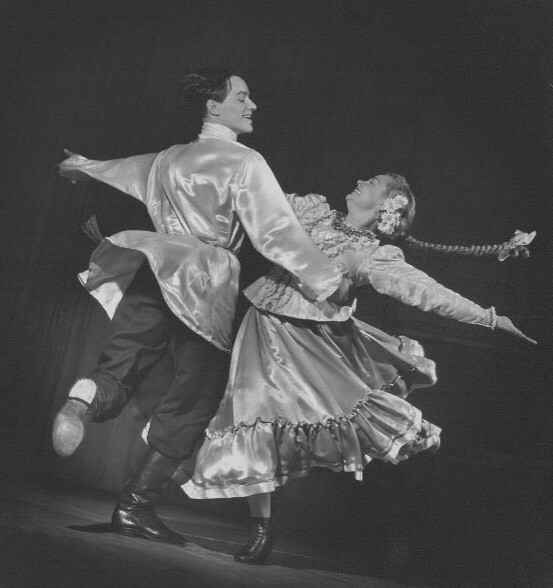
Russian dance by Igor Moiseyev’s ensemble, 1957
Yevgeny Umnov/MAMM/MDF/russiainphoto.ruThere were about 200 “dances of the peoples of the USSR”, if not more, in Igor Moiseev’s company.
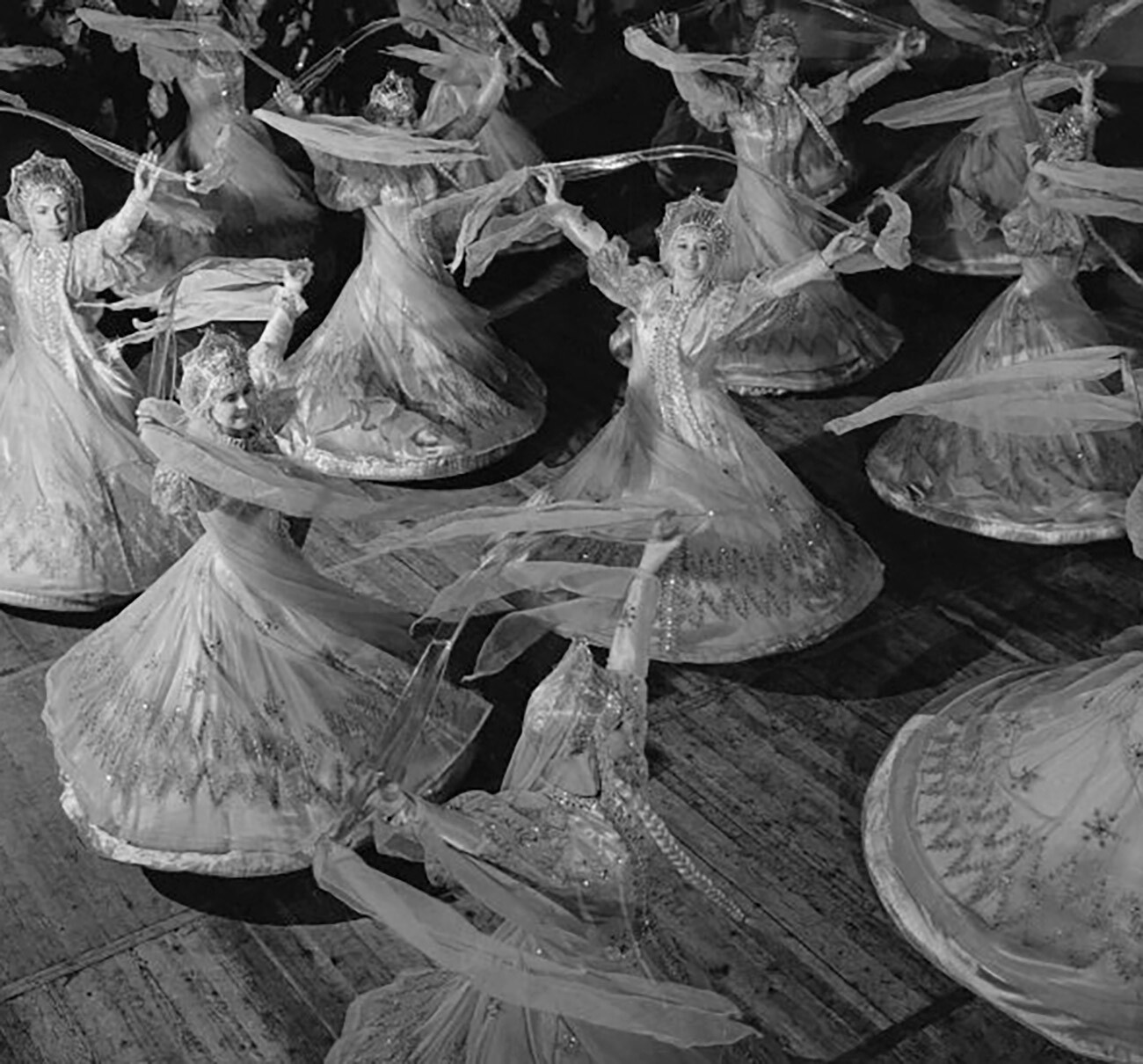
‘Metelitsa’ (Snow storm) show, 1950s
Yevgeny Umnov/MAMM/MDF/russiainphoto.ru
A Ukrainian dance by Igor Moiseyev ensemble
Yevgeny Umnov/MAMM/MDF/russiainphoto.ruIn 1948, another still popular ensemble was founded, a female Berezka collective, dancing primarily Russian and Slavic compositions.
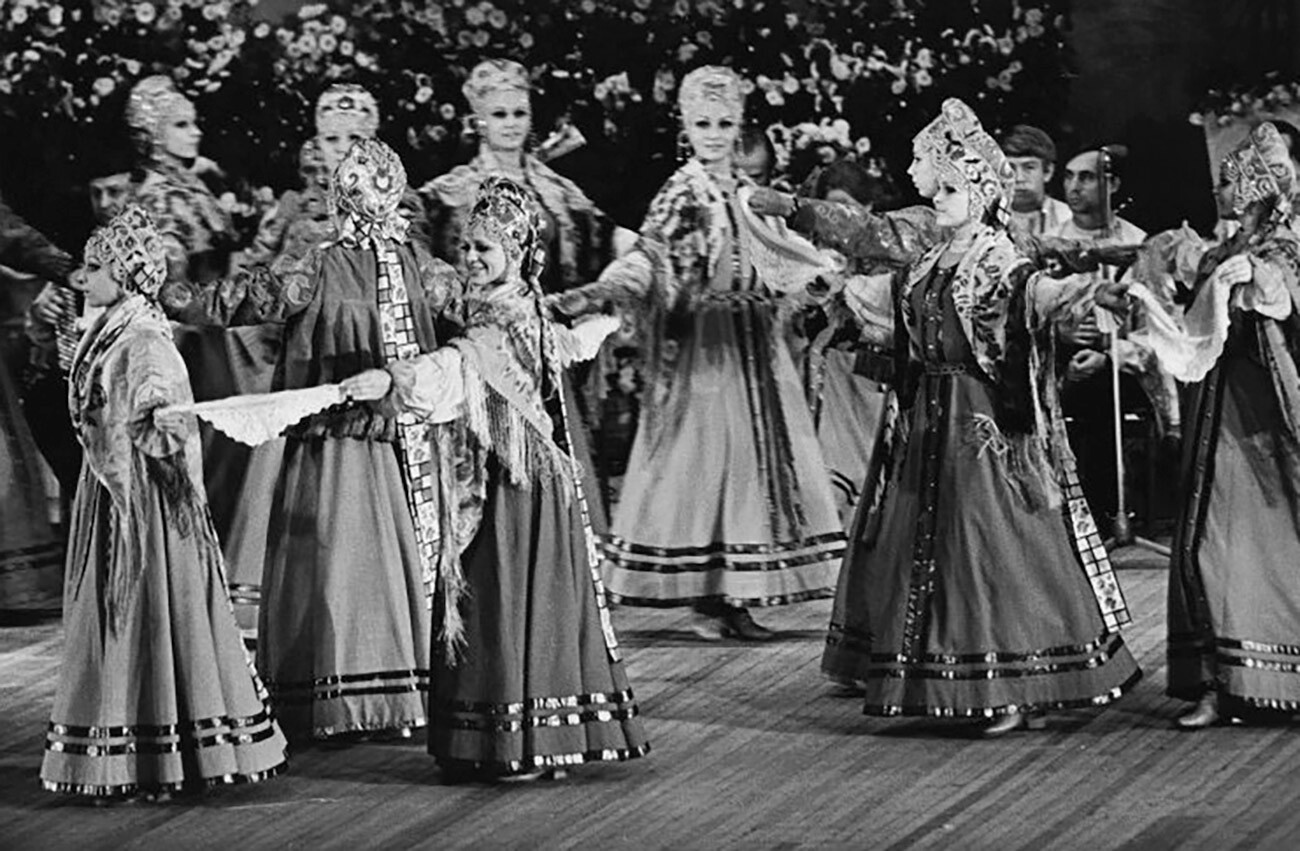
Berezka ensemble on stage, 1970s
Yury Sadovnikov/MAMM/MDF/russiainphoto.ruFolk dance became so famous that most choreographic schools opened specific departments to teach and train them.
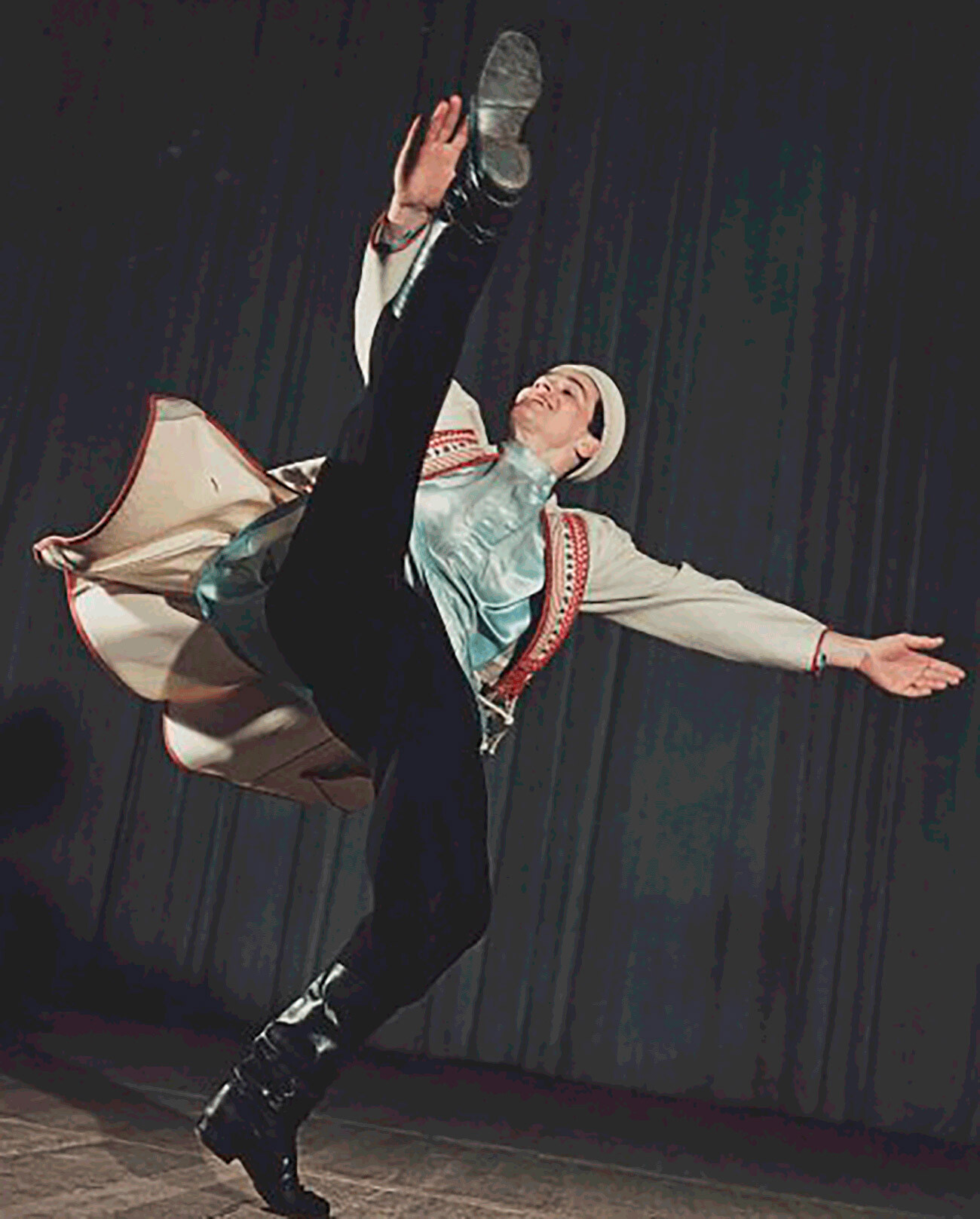
Famous dancer Lev Golovanov performing a Russian dance
Yevgeny Umnov/MAMM/MDF/russiainphoto.ruBelow are just a few of the folk dances widely performed in the USSR.
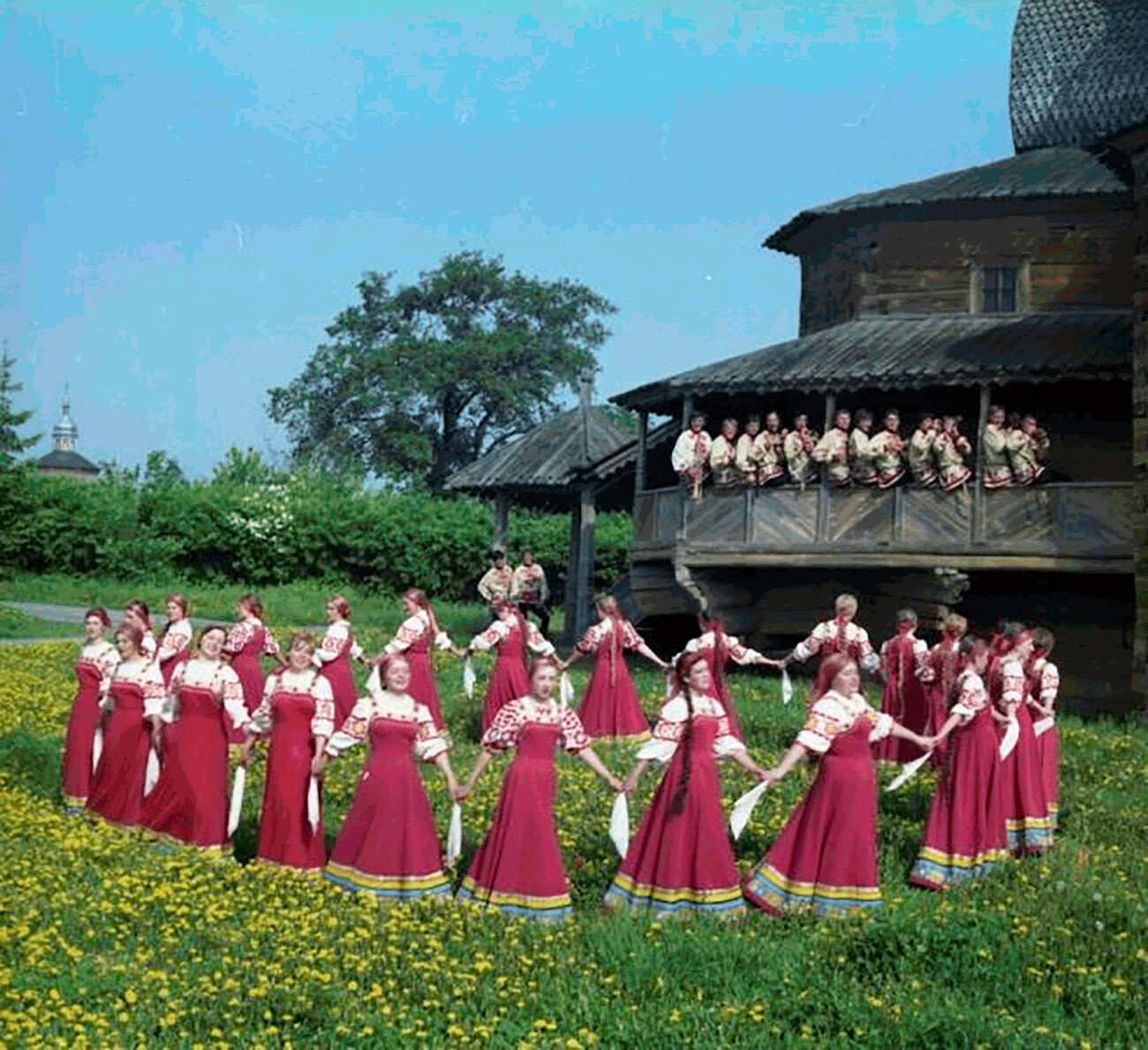
Russian dance
Semyon Mishin-Morgenstern/MAMM/MDF/russiainphoto.ru
Ukrainian ‘hopak’ dance
Robert Diament/MAMM/MDF/russiainphoto.ru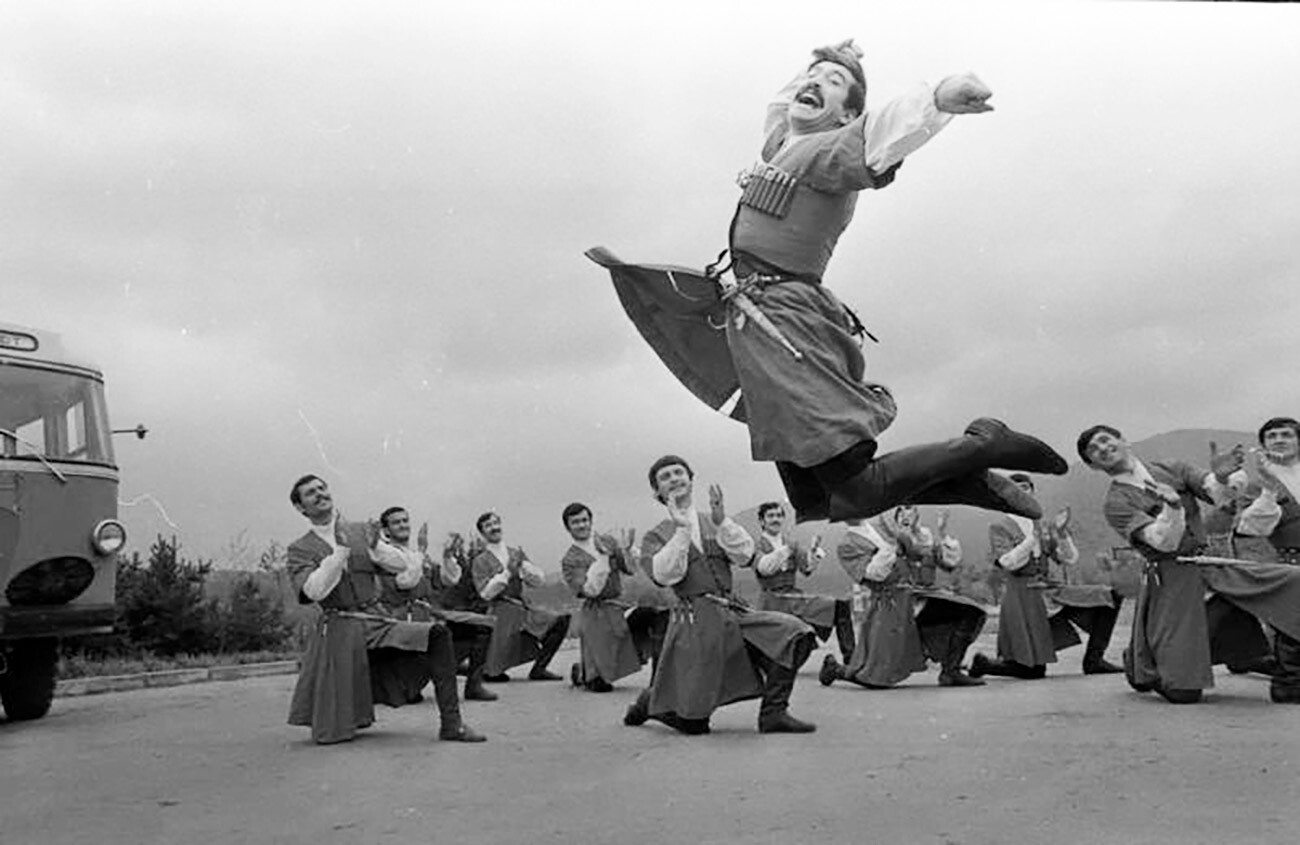
Ossetian dance
Semyon Mishin-Morgenstern/MAMM/MDF/russiainphoto.ru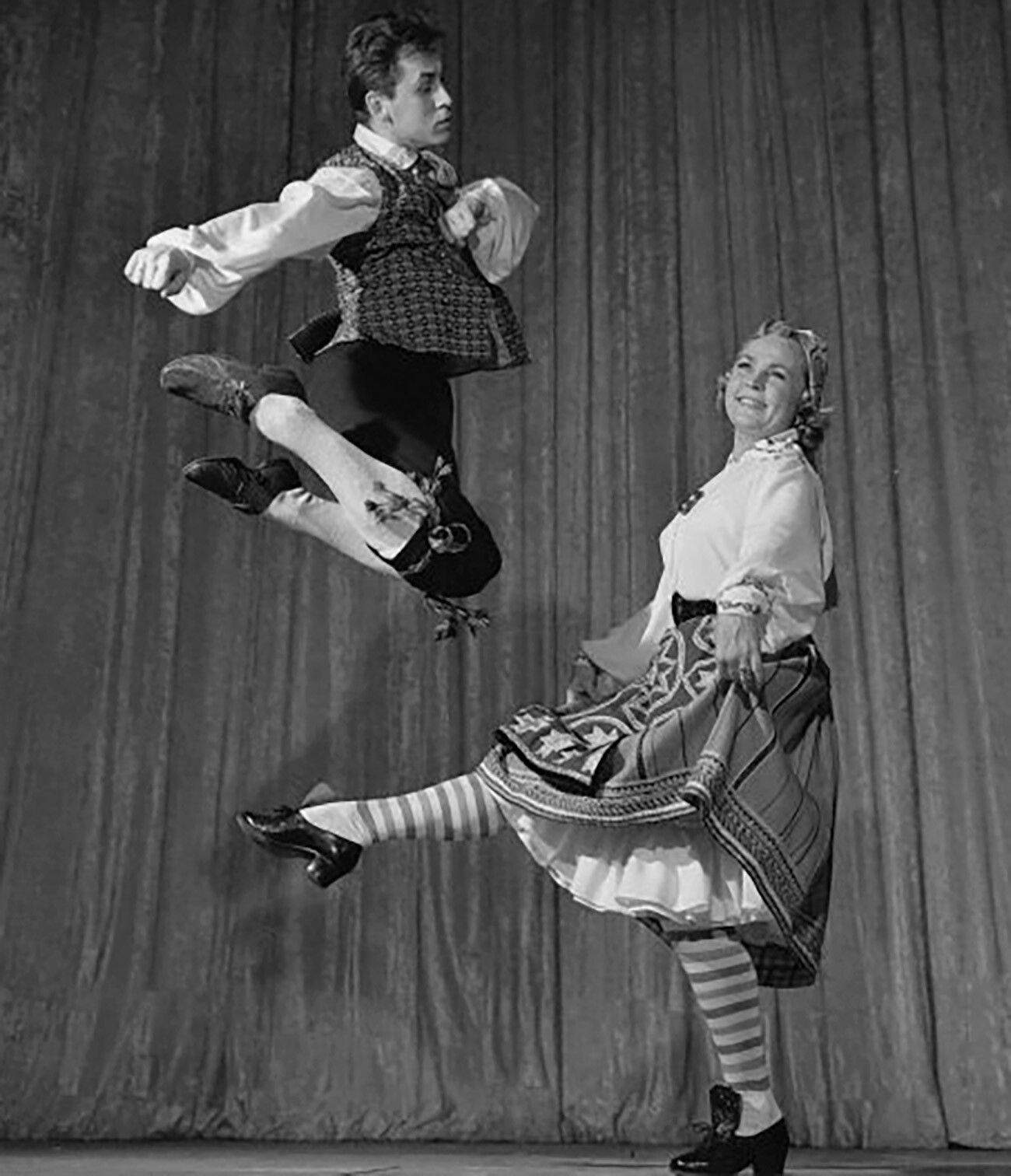
Estonian dance
Yevgeny Umnov/MAMM/MDF/russiainphoto.ru
Moldavian dance
Yevgeny Umnov/MAMM/MDF/russiainphoto.ruDear readers,
Our website and social media accounts are under threat of being restricted or banned, due to the current circumstances. So, to keep up with our latest content, simply do the following:
If using any of Russia Beyond's content, partly or in full, always provide an active hyperlink to the original material.
Subscribe
to our newsletter!
Get the week's best stories straight to your inbox